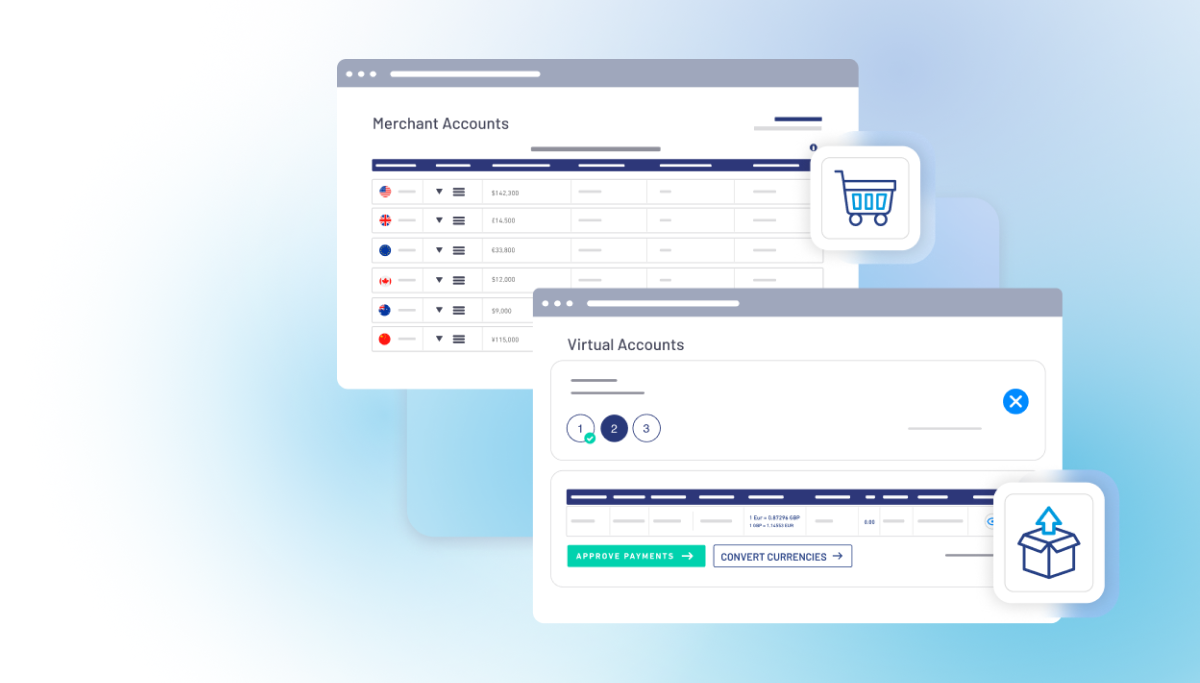Security, accuracy, and identity assurance are essential in all digital platforms. But perhaps none more so than in the payments industry.
Sensitive data, financial data, and the sending of funds themselves all require layers of protection against malicious actors. With an increasing rise in financial crime, TransferMate has introduced a new layer of security for our clients: Account Verification.
TransferMate already offers an Account Validation service as standard to the users of our payment infrastructure; however, the terms "Account Validation" and "Account Verification" are often used interchangeably.
It is important to note that these two terms refer to distinct processes, each with its own objectives, techniques, and significance in the realms of data management, user onboarding, and cybersecurity.
Let’s explore the key differences between Account Validation and Account Verification, examining their definitions, use cases, and how TransferMate’s offering can benefit users of our platform.
What is Account Validation?
.png)
Account Validation is the process of validating whether the format and structure of account information are correct and adhere to predetermined rules. It ensures that the data entered meets expected syntax or format requirements, such as whether an email address contains an "@" symbol or a bank account number follows a specific length or pattern.
In essence, validation answers the question: “Is this account information correctly formatted and potentially usable?”
Account Validation Examples
- Ensuring that BICs and IBANs’ length and format are valid against set alphanumeric formats.
- Checking that Local Routing Codes (such as sort codes in UK and Ireland) - are of valid length, i.e. 6 digits.
- Ensuring that an email address is in a valid format (e.g., name@example.com).
- Confirming that a credit card number has the correct number of digits.
- Checking that a phone number contains only digits and matches a particular length for a country code.
Account Validation Purpose
When it comes to Account Validation, the main goal is to reduce errors during data entry. It helps preserve data integrity and prevents mis-entered data from entering a system, which could cause errors or failures in downstream processes.
Common Techniques of Validation
- Regular Expressions (Regex): Used to define and check the structure of input data.
- Client-side Scripting: JavaScript code can validate inputs before they are submitted to a server.
- Backend Validation: Server-side code checks the data again before processing or storing it.
- Checksum Algorithms: Such as the Luhn algorithm for credit card validation.
What is Account Verification?
.png)
Account Verification is the process of confirming that the account information provided actually exists and belongs to the user claiming it. This step typically involves communication with external systems or the account holder to ensure authenticity.
This has existed in the banking for a long time, but has been a manual process, however, we know have an automated process for this which reduces costs and human errors.
Verification answers the question: Does this account really exist, and does it belong to the person we’re trying to pay?
Account Verification Examples
- Ensuring the existence and status of the recipient’s financial institution
- Confirming the name associated with the beneficiary's account
- Confirming the beneficiary’s account currency,
Account Verification Purpose
The aim of verification is to ensure the legitimacy of an account and its association with a specific user or entity. It plays a vital role in preventing fraud, improving security, and ensuring compliance with regulations, including KYC (Know Your Customer) checks.
Common Techniques of Verification
- Issue client requests: To verify an account, TransferMate clients issue a request that includes information on the beneficiary, such as: Receiving an Institution Identifier and Account Identifier, such as BIC or IBAN, respectively.
- Name Match Score: This indicates the degree of similarity between a client's provided name and the name on their bank records. i.e. Jonathon vs. Jonathan will produce an 87% match.
- Currency Verification: Return confirmation of the beneficiary's account currency.
Validation vs Verification: Key Differences
Account Validation Use Cases
1. Form Input Sanitization
Web applications and mobile apps often use validation to clean data before submission, which helps prevent broken entries that could crash systems or result in security vulnerabilities.
2. Payment Gateways
Before charging a card, payment systems validate the number format and expiry date.
3. Database Integrity
Ensures that stored data meets specific quality standards, aiding analytics and reporting.
Account Verification Use Cases
1. User Verification
Prevents bots or malicious users from impersonating a beneficiary
2. Fraud Prevention
Verifying the account holder and other statuses can support transaction monitoring and investigations.
3. Regulatory Compliance
In some jurisdictions, Account Verification is mandated under AML/KYC laws.
4. Onboarding Efficiencies
Account Verification can replace documentation and penny test requirements, driving automation in the onboarding stage.
5. Reduce bounce-back volumes
Verifying account holders and other statuses minimizes bounced payments.
Why Account Verification Is Critical for Businesses
.png)
Account verification is useful to ensure your beneficiaries are who they say they are. It offers security assurance to businesses sending payments internationally, reducing fraud and money laundering activities.
A major form of fraud account verification protects against is Account Push Payments (APP) fraud. APP happens when a fraudster sends details to hijack and misdirect legitimate payments. In 2023, figures show that almost half a billion pounds was lost to APP scams in 2023. With Account verification, businesses can rely on another level of protection against APP fraud.

Regulations surrounding the treatment of APP fraud were introduced during 2024 laying out a set of ground rules in the Single Euro Payments Area (SEPA) that payment service providers (PSPs) must adhere. The Verification of Payee (VOP) scheme has been gradually introduced through 2025, with an effective date for it to be fully adhered to by PSPs due the 5th of October 2025. TransferMate is at the forefront of regulatory adherence having launched our Account Verification service in March of this year.
While it aids in risk management, and reduces exposure to scams, ultimately, Account Verification helps companies adhere to regulatory standards and protects them from fines and legal issues.
As an added benefit, TransferMate’s value-added service for Account Verification, confirms the beneficiary's account currency, allowing for currency conversion at the source of payment. This allows the entity sending the payment to save on the costs of transfers, benefiting from preferential foreign exchange rates.
Integration of Validation and Verification
While different in nature, validation and verification often complement each other. A robust user onboarding or transaction process incorporates both:
- Validate inputs to ensure they are in the proper format.
- Verify to confirm ownership or authenticity of an account.
Account Validation and Account Verification are both important, but they distinctly differ in how they maintain data integrity and security in payment systems.
Understanding and properly applying both processes can improve the user experience, reduce fraud, enhance data quality, and ensure regulatory compliance for any organization managing user information.
Recognizing the difference and using both methods correctly is a business's best course of action.
Speak with your relationship manager to add Account Verification to your existing TransferMate API Integration or your TransferMate account today.








